Germany has the largest herd of dairy cattle and the second-largest cattle population in the European Union. Germany has 12.9 million head of cattle, including 4.2 million dairy cows and 0.7 million lactating cows. Dairy and its products include different types of milk such as whole milk, semi-skimmed milk, and milk products with skimmed milk such as butter, cheese, yogurt, and ice cream. Let’s learn more about Dairy farming in Germany.
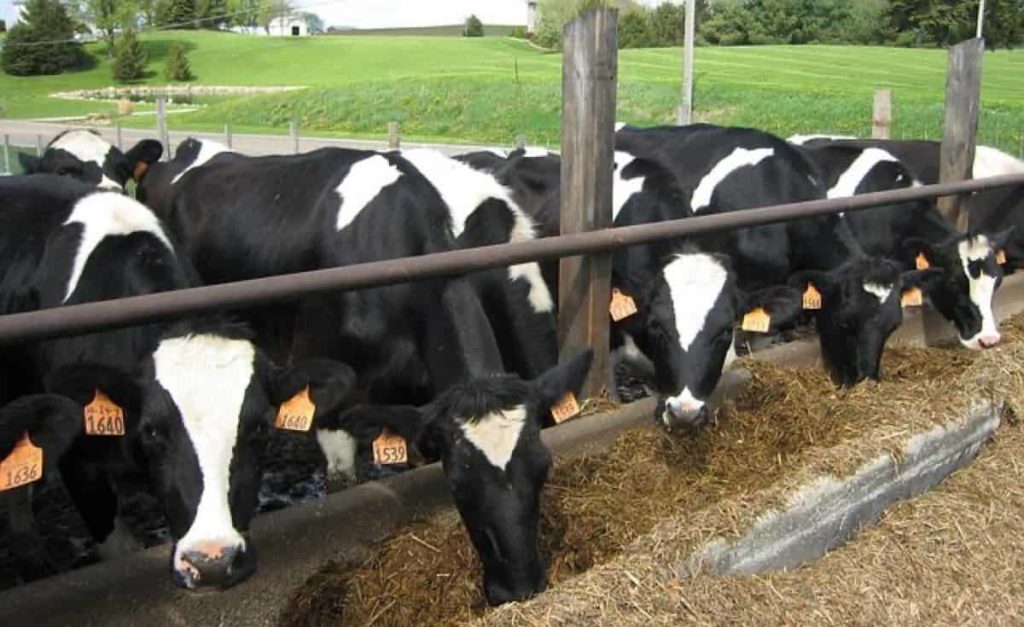
Dairy farming importance in Germany
With a market share of over 20%, Germany is the largest milk producer in the European Union. About one in four farms in Germany raises dairy cows. Dairy production is the essential branch of livestock and generally contributes about 18%, which is the most significant proportion of the production value of German agriculture. While the number of farms has decreased by 50% during the last 20 years, the total milk production has increased. It results in faster milk production per cow, as the total number of dairy cows has decreased.
The focus is on milk production in the grasslands of northwestern and southern Germany. The Dairy Cattle Raising Industry activities are mainly raw milk production and raising dairy cows. Industry operators either sell the prepared raw milk directly to consumers or deliver the milk to dairies for further processing. Cooperatives play an essential role in the industry, as individual dairy farmers are often unable to produce the quantity demanded by large consumers. Therefore, cooperatives bundle the production of individual farms and thus strengthen the competitive position of dairy farmers.
In the years to come, the problems in the milk market are not expected to ease, or the producers’ prices stabilize temporarily. If dairy farmers are forced to buy feed, this will result in additional costs and lower profit margins for operators in the industry. Furthermore, consumer trends will rapidly affect the industry in the future. In addition, land shortages, a shortage of skilled labor, and growing social demands for environmentally friendly and animal-friendly production pose particular challenges.
In case you missed it: How this Farmer Made 1 Lakh Per Month from His Dairy Farm: A Success Story
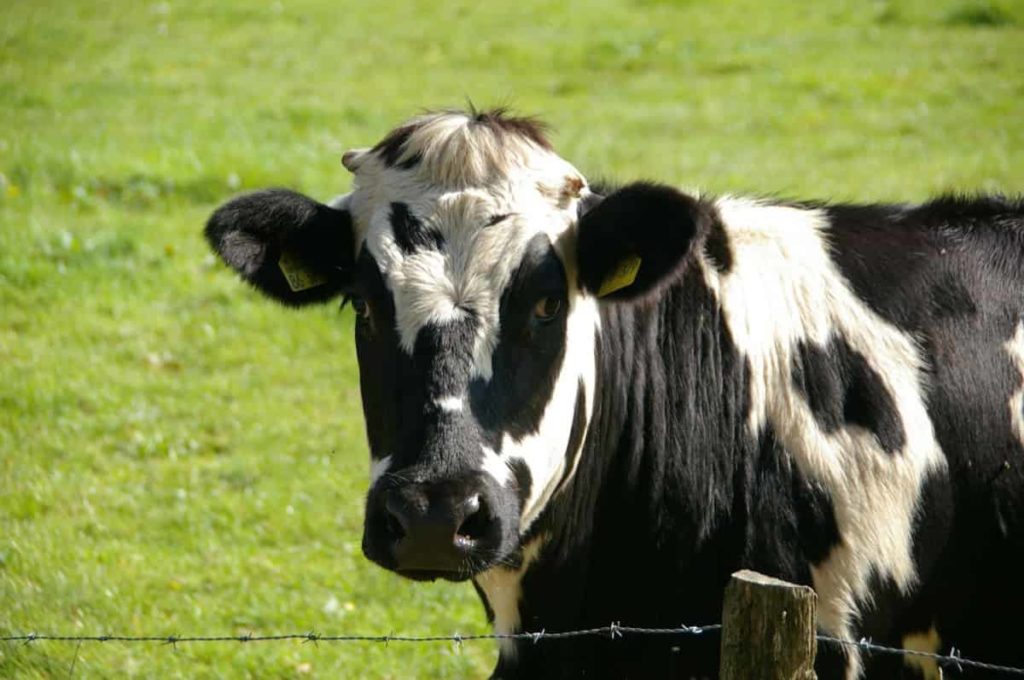
Half of the farms in Germany specialize in livestock, with the leading group (> 25%) being dairy farms. A growing trend towards year-round housing characterizes dairy farming in Germany. Germany has a long tradition of livestock production, is well organized, and has considerable experience in breeding. It includes pregnancy on farms, milk production, and slaughter.
Sustainable breeding programs and effective farm management are based on high-performance standards and dairy and dairy cattle quality testing. About 2.6 million cattle are registered in the herd books, and 3.5 million cows are reported for milk recording. Germany has the largest herd of dairy cattle and the second-largest cattle population in the European Union.
Housing systems for dairy animals in Germany
Germany has a wide range of management dairy housing systems, from small family farms with 50-60 cows to large-scale operations with over 2,000 cows. The fact that the German Holsteins are successful under these widely diverse food and management systems in warehouses and pastures indicates their extraordinary adaptation. This adaptation is also seen in different climatic conditions, making the German Holsteins the export sales target.
- 74% of dairy cows in loose/free stall operations
- 21% of dairy cows in tie stalls
- 42% of dairy cows use pastures
In case you missed it: Equipment Needed for Dairy Farming: Small Dairy Machinery Details
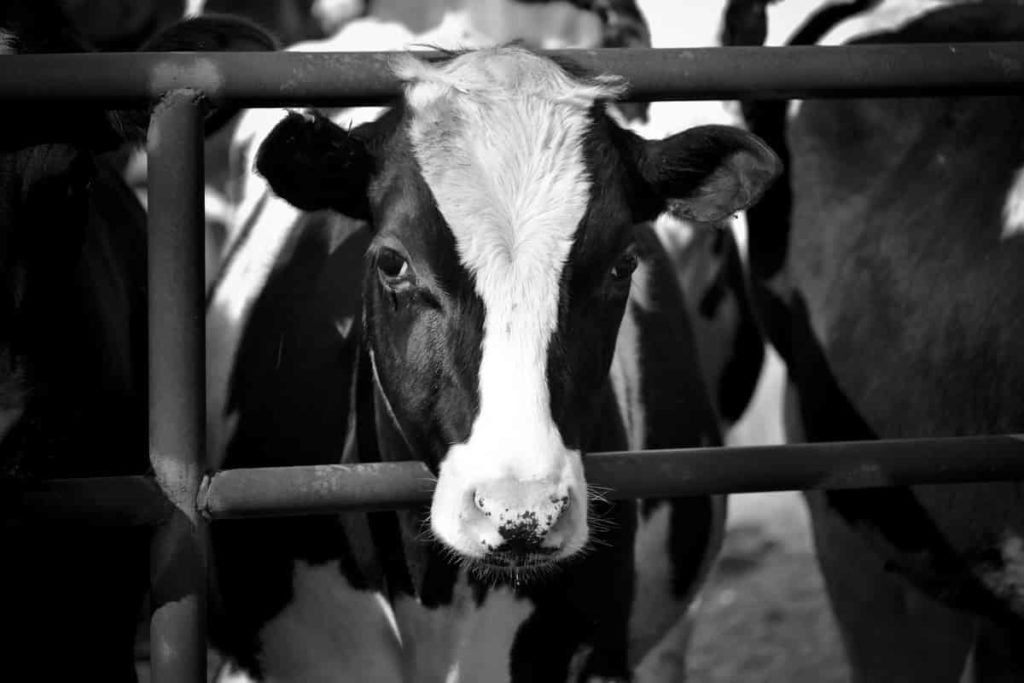
Feeding management for Dairy farming in Germany
High-producing dairy cows need food that meets the nutritional requirements for high milk production. Minerals, vitamins, carbohydrates, amino acids, fatty acids, and water are nutrients a lactating cow needs to meet the mammary gland’s demand for milk and milk products. However, producing a cow with more milk starts with calf and cow nutrition. Always feed the cow at the same time. Make sure the feed is easily accessible. The cow needs regular. Feed enough so that the feeding trough is never empty and accept leftover food.
Clean the feeding manager at least once a day (feeding with an easy-to-clean surface also reduces the heating of the feed). In this case, the cow will eat small portions throughout the day. Ensure that cows have access to clean and fresh water 24 hours a day. Cows drink 6 to 14 times a day. Usually after breastfeeding and after every meal. The preferred temperature should be between 17-27°C. Make sure that at least 10% of the cows can drink at a time.
Feeding a milking cow should be considered to minimize the loss of nutrients from the proper diet of lactating cattle and maximize the profit of the milk produced. Protein supplements such as oil cakes, energy sources such as cereals (corn, millet), tapioca chips, and laxatives such as bran (rice bran, wheat bran, gram bran) are commonly used. Mineral compounds containing significant and trace elements should be added at 2%.
Dairy cow rations
In Germany, cows are fed fodder [silage (mainly grass and corn) or hay (alfalfa)], concentrated [cereals (barley, wheat, and corn), protein sources (soybean meal and rapeseed meal), and other by-products (sugar beet pulp, etc.)] and general additives. The fodder ratio varies from 60:40 to 40:60% for concentration but mainly fodder based diet is used.
In case you missed it: Dairy Farm Insurance in India, Companies, Policy, and Premium
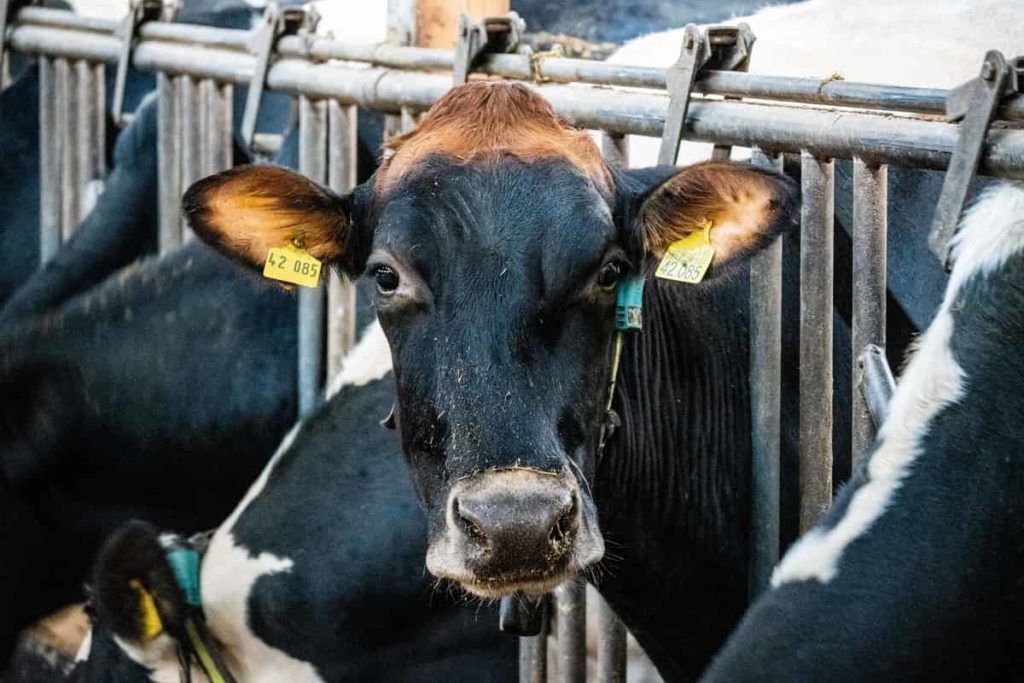
In Germany, dairy cows are now being raised for maximum milk production. As a result, animals exceed their physical stress and are more susceptible to disease. Skills and professional management are the absolute prerequisites for keeping dairy cows healthy. Many farmers in the German agribusiness have already overtaken them with the assurance of the basic needs of these ‘high performance’ animals.
Dairy breeds in Germany
The dairy business provides a relatively low-risk source of daily income. However, to ensure maximum yield and profit from dairy farming, these farmers need to adopt the proper business plan and good practices of dairy management.
Murnau-Werdenfels Cattle
It is an old, strong dairy breed from Upper Bavaria, the southernmost part of Germany. The cow produces about 4300 kg of milk every year (3.8% fat; 3.4% protein). They are helpful for milk production. Murnau-Werdenfels Cows are very long-lived creatures and are very numerous.
German Black Pied Dairy
It was a breed of GDR dairy cattle bred through breeding. The German Black Pied Cattle is a breed of dairy cattle bred in the northern coastal areas of north Germany and the Netherlands. This three-breed cross was to breed cattle with high milk production and high-fat content milk.
Fleckvieh
Fleckvieh is a dual-purpose breed of cattle suitable for producing both milk and meat. It began in the 19th century with the crossbreeding of local stocks in Central Europe with cement cattle imported from Switzerland. Today, the world’s population consists of 41 million animals. It is a dual-purpose breed focused on strength and fitness while maintaining high milk performance. It is a very popular breed because it adapts to these harsh climatic conditions.
In case you missed it: Dairy Disease Symptoms and Treatment for Cows, Cattle, Goats, and Sheep
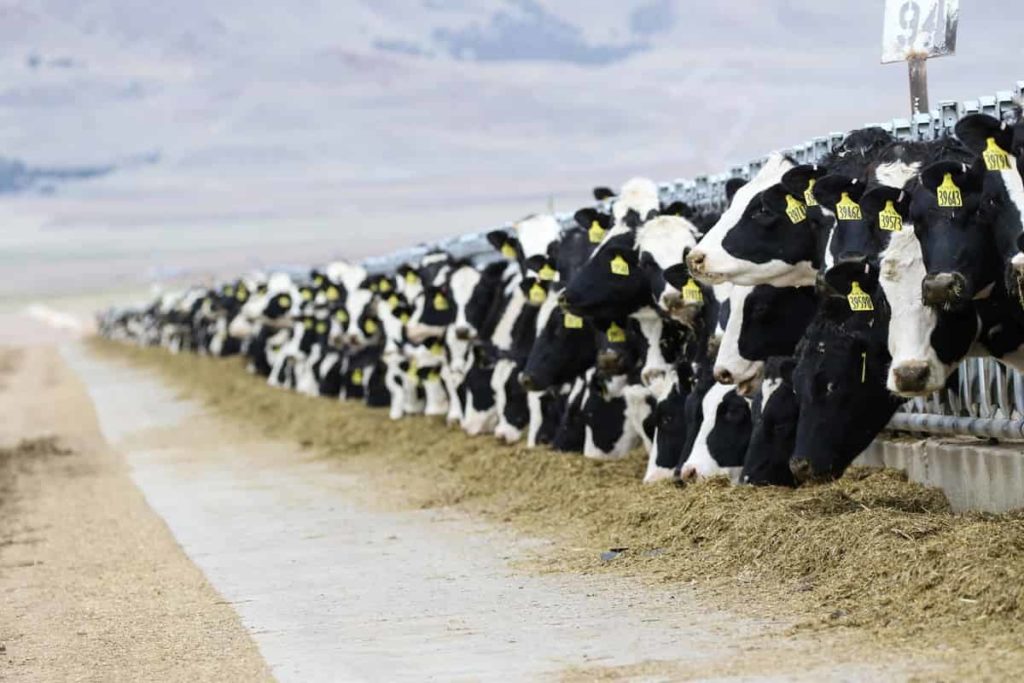
Gelbvieh
Gelbvieh is a dairy breed that originated in the Franconi districts of Bavaria in Germany. Gelbvieh was initially known as the “Red-Yellow Franconian Cattle” and was bred from several local breeds. Gelbviehs were initially raised as triple-purpose cattle (used for milk, beef, and draught). Gelbvieh means “yellow cattle” in German, and this breed originated from the golden-brown cattle with black hooves and full-body color. Polled and black genetics through selective breeding is also common in the breed.
Gelbvieh cattle are known for their high-profit margins and feeding performance and were initially selected for easy growth, skin maturity, leanness, softness, and longevity. They can adapt to many different ranges of land and climatic conditions. Gelbvieh females were selected for great maternity with strong fertility, motherly ability, good udders, and strong milk production. It is also known for small body offspring, making it easier to have a calf.
Hinterwald
Hinterwald is an old local breed of Black Forest cattle. Cows are small, only 115 to 125 centimeters (45 to 49 inches) tall and weigh 380 to 480 kilograms (840 to 1,060 pounds), making them the smallest breed of cattle still found in Central Europe. The head is primarily white; the rest of the coat is light yellow to dark reddish-brown. They adapt well to the alpine climate once reared to cope with extreme conditions, such as cold winters, steep pastures, and cheap food. They are used for milk production.
Herzer Rotvieh
Harzer Rotvieh is a breed of monkey of the same color in Germany. They serve the purpose of providing milk, beef, and draft power.
In case you missed it: Top 50 Dairy Farming Tips, Ideas, and Techniques
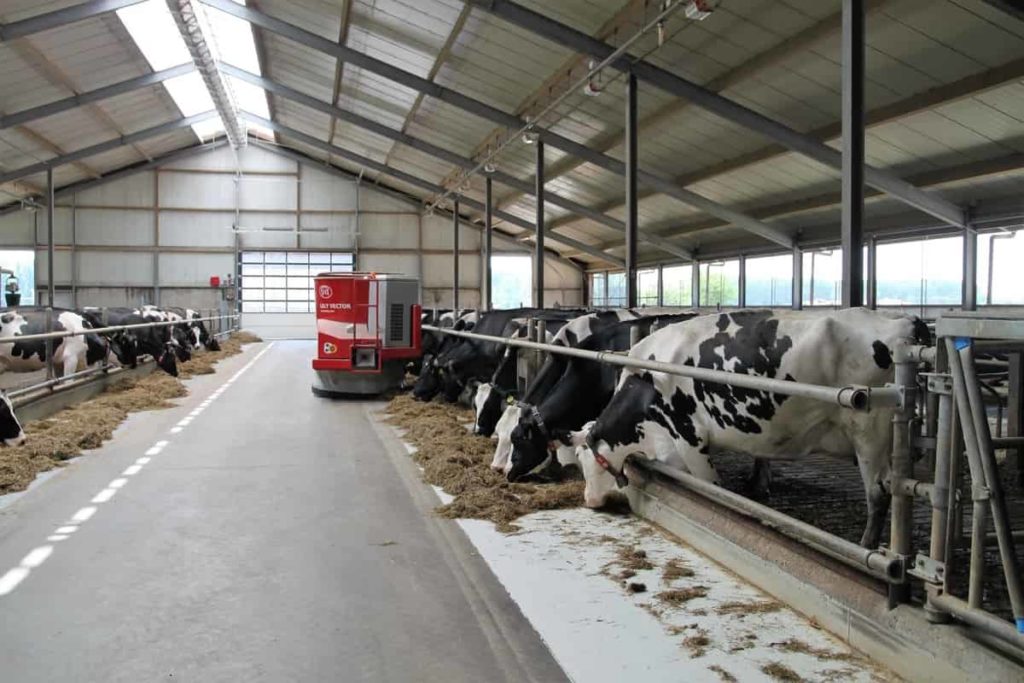
Lakenvelder
The Lakenvelder is a German breed of dairy cattle. As a dairy breed, Lakenvelder produces grass and fodder more efficiently than the average breed and does not require strict management methods. As a result, cows can produce about 9,100 kg (20,000 lb) of milk per year.
Angeln cattle
The Angeln cattle are a breed of Angel cattle originally from Angeln in Schleswig-Holstein. Angeln cattle are red and were one of the large Danish Red Cattle breed founders.
I need information how to connect Germany farmers and cow milk deriy farming centre if possiblety In India finding cows and cemance ext could you please update me